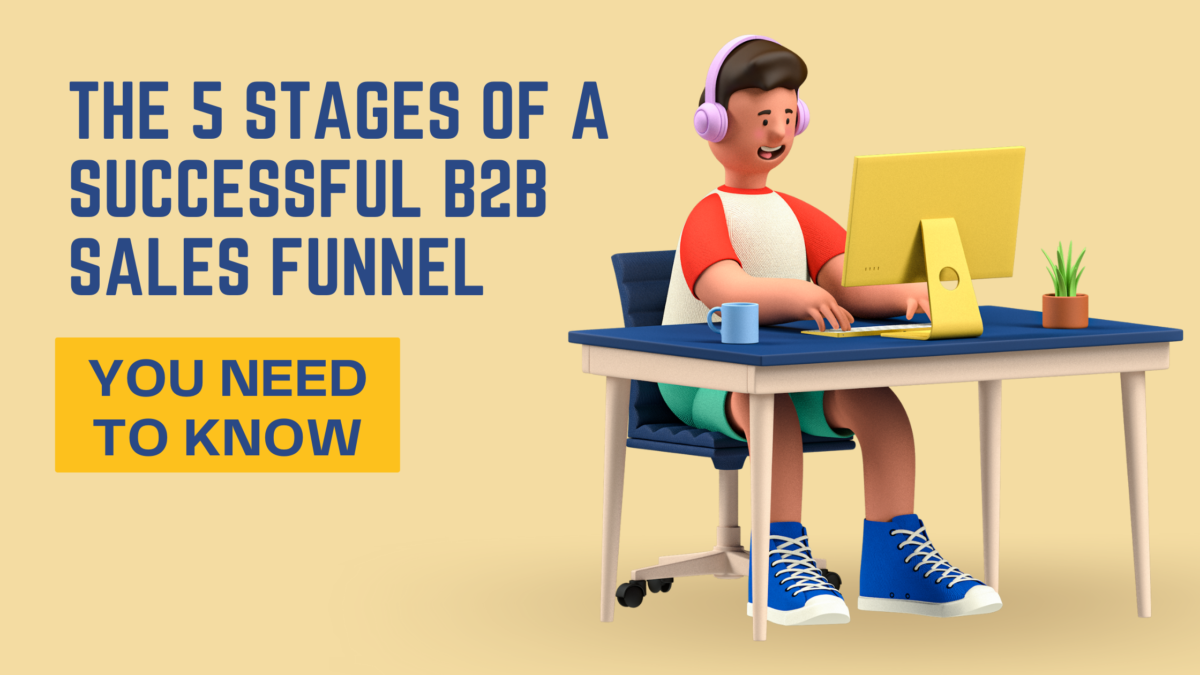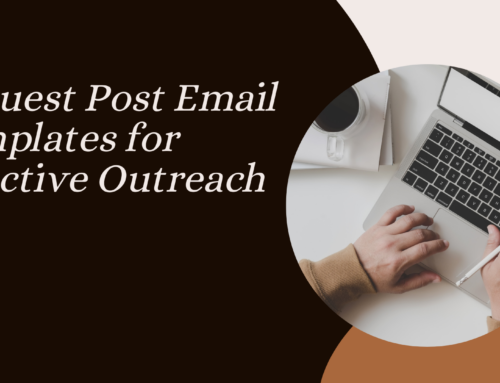INTRODUCTION
Success is a beautiful word that we hear a lot of these days, but few people really understand what it means. Most people think success is a destination, and if they do not reach it, then they are not successful. In reality, success is more like a journey, and it is a goal that you should never stop working towards. Success is a lot like a funnel, and there are five stages of a successful B2B sales funnel that you should know. If you aren’t prepared, you could end at the bottom of a funnel and not reach your goal.
WHAT IS A B2B SALES FUNNEL?
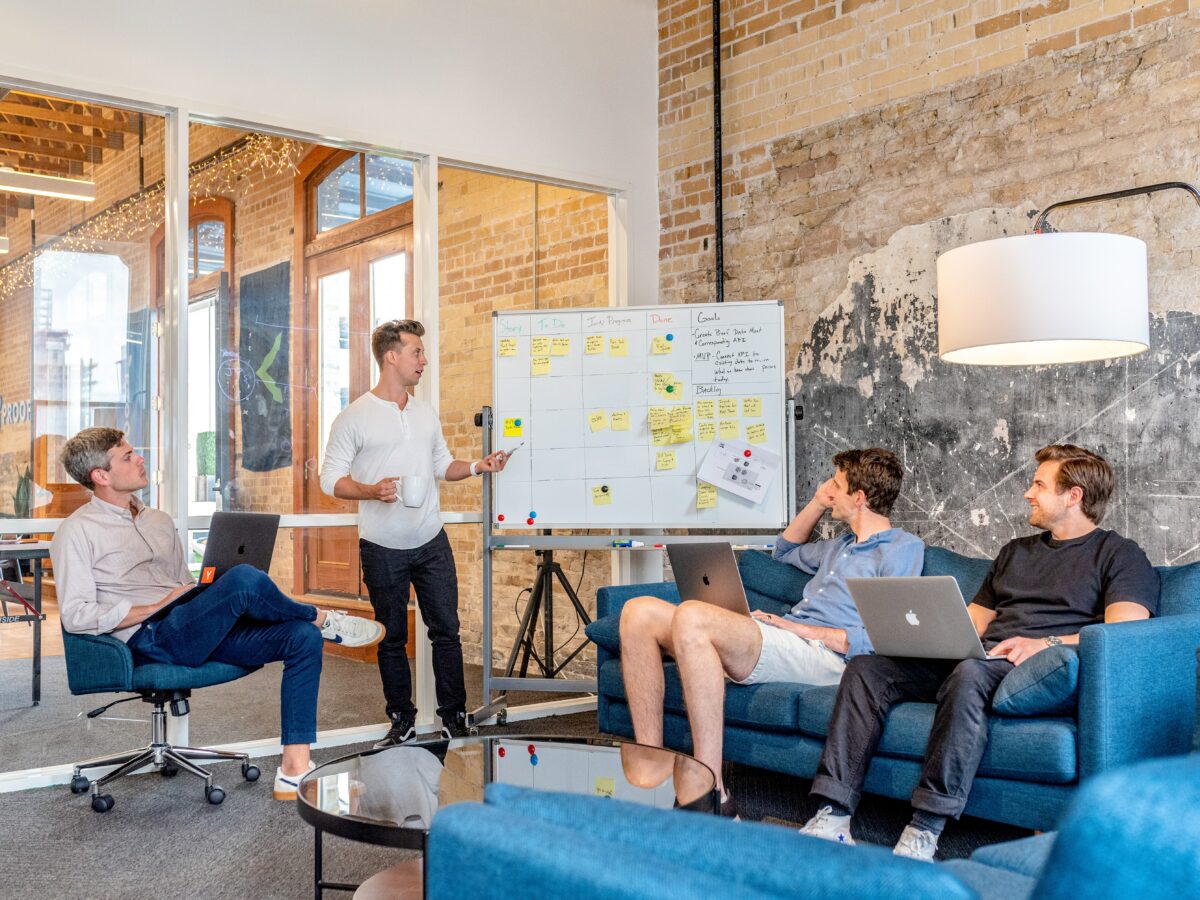
A sales funnel a group of steps that a company creates to help sell its product or service to customers. It starts with a lead that has a certain need and ends with a customer that makes a purchase. Sales funnels can be set up in two different ways: you’re either funneling customers who are brand new to your business into the buying cycle or they’re existing customers that have already purchased from you once or maybe even several times already. The process of creating the sales funnel is not as difficult as you might think. What do we need here? One part of your content strategy should involve setting up landing pages and building a website around them. That may include putting together a script, then optimizing the page to make it as appealing as possible. A sales funnel is not a one-time thing. It is a process that should be repeated.
A B2B sales funnel can be a number of different things, but they all work in the same principle. Everyone may not be able to use the same sales funnel, but there is a reason why they are all effective. It’s because they all work on the same principle of getting your lead to “the next step.” The next step could be a demo or a trial of your product. It could also be a phone call or an in-person appointment. The main point is that the B2B sales funnel constantly moving in order to find the best way to close the sale.
WHY IS THE B2B SALES FUNNEL ESSENTIAL?
B2B sales funnels are important to any business because they are a way to make sales in a scalable and effective way. As a business, your goal is to get people to buy your product or service, and if you can do that by building a profitable sales funnel, you’ll be able to do it on a large scale. That’s why your success as a business depends on your B2B sales funnel. It’s a way to continue to make sales while you scale your business.
In order to create a successful B2B sales funnel, you will need to decide what you want to achieve. Once you know what you plan to create, it will be time to develop a marketing plan. Target audience will be determined after evaluating the primary need of targeted users.Once you have decided on who you want to target, you will need to come up with a plan for how to get your product or service in front of them.
The sales funnel should end with a completed sale. However, the way it works is by bringing people into your sales funnel. This is the first phase of the funnel and is known as lead generation. There are many ways to do this. The most common way is to offer a free trial or demo of your product or service. You can offer this on your website or through other channels, like advertisements, social media, etc. When you build a product or a service, there are always two stages:
From there, the second phase is the qualification phase. Qualifying prospects through different methods and then ultimately deciding which ones to pass to the following phase, the sales enablement phase. Once you’ve reached the sales enablement phase, you’re ready to start selling. The sales enablement phase is where you get your prospect to decide they want to buy your product and they’re ready to buy it. Then, the third phase is the purchase phase. This is where you close the deal and complete the sale.
THE 5 STAGES OF A B2B SALES FUNNEL
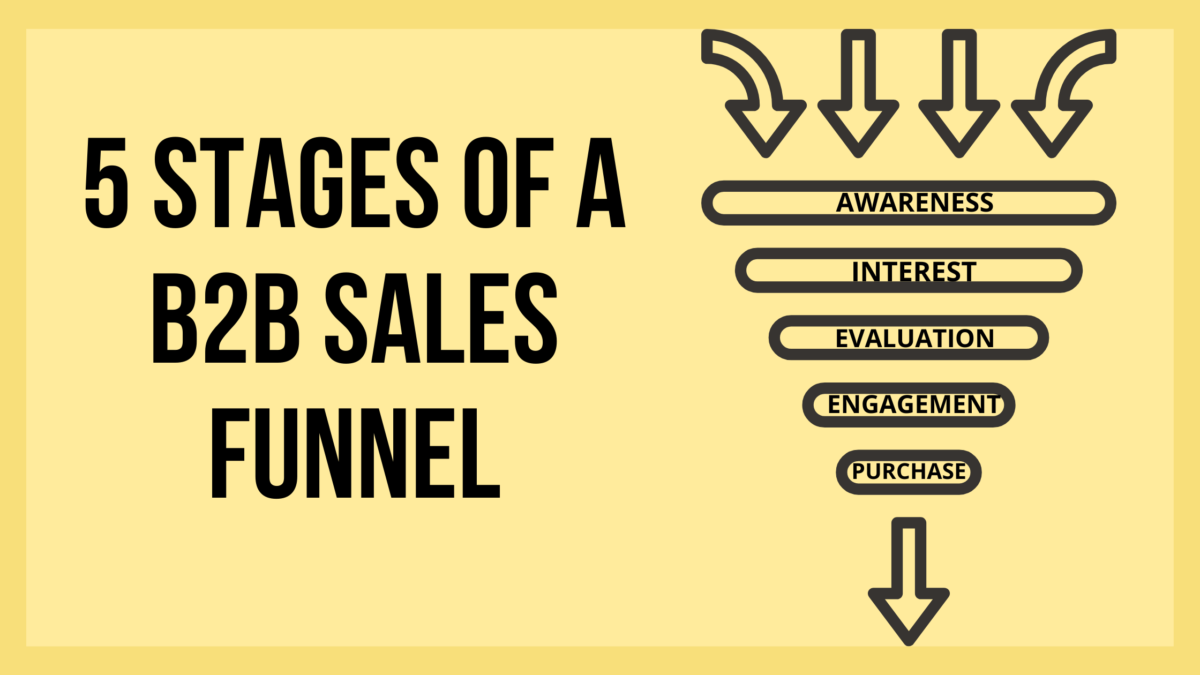
In the last section, we got an overview of how a sales funnel looks on the whole. Now, let’s delve in further and understand the five stages of a sales funnel:
1. Awareness
2. Interest
3. Evaluation
4. Engagement
5. Purchase
1. Awareness stage
The awareness stage is the first of five stages in a sales funnel. The awareness stage is where the individual learns about your product or service. This is the stage where you are showing your product or service to an audience, so make sure you know what message you want it to send. This is not a stage where you are trying to sell your product or service. You are only trying to introduce your product or service to your audience. If you can’t get attention in this stage, then you might be in the wrong market.
This stage will help you to get people’s attention and start the conversation. At this stage, your goal is to educate your audience on what your product or service can do. Your products or services have many benefits to it for sure. The challenge for you will be explaining what those benefits are and how they’ll help others. You can do this in a number of ways. For example, you can create a video that shows how your product or service can benefit them. You can also use social media to get the word out about your product or service. This stage is where you’ll need to build your audience.
2. Interest stage
Interest stage is the second step in the sales funnel. In this stage, you will want to focus on getting your prospect interested in your product or service. You’ll want to do this by showing them what your product or service can do for them. You can do this through a video or a short PowerPoint presentation, but the key is to establish a relationship with your prospect.
The interest stage is when prospects are shown a more detailed demonstration of what are the benefits of your product or service. The interest stage is also the first stage of your sales funnel. It is the stage where you need to start telling your prospect what will make them better off. It is important to start with the benefits of your product or service and then move on to the features.
3. Evaluation stage
The evaluation stage is the third stage in the sales funnel. In this stage, the salesperson learns about the customer by asking questions and observing their behavior. The customer may have questions about the product and the company and the salesperson should be able to answer those questions in a clear, concise manner. The salesperson will also be able to observe the customer’s behavior and determine where they are in the buying process. If they are just starting the evaluation process, they should continue to ask questions and encourage the customer to talk more about their needs.
This is where you turn a lead into a paying customer by knowing when to say yes or no – it’s key that you know how to get them onboard the service or product that they need.
In order to do this, you need to engage your customer. Communicating with your leads is the number one way to get them to buy. Showing customers that you care and that their needs are important is the best way to feel like they are important. You can do this in through various ways, but it is usually done through email. Make sure you include the right information in your emails and make them as helpful as possible. You can also use video, images, and sound effects to make your email more engaging.
4. Engagement stage
The fourth stage is an important part of the sales funnel. It is where the buyer has become engaged with your brand and is starting to think about making a purchase. This is where you want to provide them with a sense of value and a roadmap to making the purchase. This is where they are ready to go through the process of buying. The key is to make it easy for them to get from point A to point B.
If you can’t get the customer to engage, you won’t ever hit the end goal. This stage is where you have to offer the customer a reason to stay in the sales funnel. This can be done through a free trial, webinar, webinars, content, or even discounts. If you do offer a free trial or webinar, make sure it is as close to the end of the sales funnel as possible.
5. Purchase stage
Purchase is the final stage of the sales funnel. This is the last stage of the sales funnel because once the customer has bought your product, they are no longer in the funnel. The customer has now made a purchase, so you can move onto the next stage of the sales funnel. The purchase stage is the shortest stage of the sales funnel because the customer has now made a purchase. However, even though the customer has bought your product, it is still important to continue to market your product and make sure that the customer is satisfied with their purchase.
The ultimate goal of the sales funnel is to have a completed sale. To facilitate a completed sale, you need to create a system that leads people into your sales funnel. One of the most popluar way of this is by offering a free trial or demo of your product or service. You can offer this on your website or through your sales team. Once someone starts using your product or service, they become a lead, and the sales funnel should be designed to turn leads into paying customers.
Types of B2B Sales Funnels
Forrester published two reports in 2010 that were strongly opposed to the classic model of sales. And further research published in 2012 showed that many prospects did not fit this traditional model and actively fell through its gaps. As a result, new models have emerged and are widely used today. For example, peer reviews, recommendations given by friends, competitive alternatives and user-generated content have resulted in entirely new approaches.
• McKinsey loyalty loop – Originally published in 2009, the McKinsey loyalty loop is an award winning infographic that uses a circular diagram to represent a customer’s purchasing behavior over time. The original AIDA model (selling) has been added to the loop, showing how positive the post-purchase experience contributes to the selling process.
• The Heinz Sales Model is also known as the Bowtie. It has seven points to cover no matter what product or service you are selling – community, awareness, consideration, action, value realization, loyalty and evangelism.
• The Conversion Funnel – This business sales funnel concept has pre-awareness, awareness, research & familiarity, option & shortlist, consideration, purchase, brand ambassador, and repurchase intent
• According to the JB Media Group, company executives should focus on building up brand awareness and generating leads, nurturing potential clients until they are ready to sign a deal, and then making sure that clients return for repeat purchases.
• The RAIN Group’s buying process – The RAIN Group doesn’t go along with the sales funnel model, instead they created a buying process called RAIN. This process first has Prospecting/Dissatisfaction, Prospecting/Analysis, Solution Crafting/Intervention, Solution Presentation/Selection and Win/Commitment. Finally its completed with Account Development/Implementation.
How to construct the perfect B2B sales funnel?

We have seen how a sales funnel is important to the success of a business. Thus, it only makes sense to understand the parameters that influence the success of a funnel.
1. Understand your customers using a buyer persona
Buyer personas are a vital tool for any B2B company. They are essentially a description of your ideal customer – where they live, what are their hobbies, what’s their age, how their day looks like, what job do they have, etc.
A buyer persona helps understand your target audience and the key factors that influence their decision process. Identifying a buyer persona is a good start, but it can be difficult to understand what steps the buyer takes during their journey. In order to improve your B2B sales funnel, it is important to understand where your customers are in the buyer journey. There are a few other ways to do this too. You can do this through a buyer persona or by running surveys or interviews. You can also use analytics tools to see where your visitors have come from and where they are going. The most vital thing is to identify where your customers are in the process and what they are doing.
2. Nurture your relationships
When you are selling to business buyers, you need to work hard to nurture relationships. The first step is to identify the primary buyer personas, or the buyer types, who are most likely to buy from you. After that, you need to answer questions like: What are the common pain points of the buyer type that is most likely to buy from you? What are the common objections that this buyer type might have? What are some solutions that you can provide? You must be able to answer these questions before you can offer solutions. If you don’t know the answers, it may be time to do some research.
It is important to have a strategy that is centered on the needs of your customer. This will help you to build relationships and nurture the customer journey.
3. Make the first impression count.
To make an impact, you need to focus on the first impressions that your buyers have of your company. This includes your website, logo, social media presence, press releases, and your marketing team. These are the first impressions that buyers make of your company, and if you don’t make a good impression, you will have a harder time convincing them to purchase. Many companies make the first impression count and do not leave anything to chance. That includes ensuring that you have a strong social media presence and that you have a website that is nicely designed. Make sure that you have an email campaign and a press release ready to go. You can also invest in a video and a podcast for your website. This will ensure that your website is always being watched and that it is always generating traffic. You want to make a good first impression, because if you don’t, buyers will most likely never buy from you.
4. Drive home your value
Implementing the ASK process to help your leads across the last stages of the sales funnel :
• Align similar goals together – Explain that you’re thinking about the pain points your lead may be experiencing. Offer to help out by letting them know what your product can do for them.
• Secure commitment – Connect to previous points and show how you’re going to reach a win-win situation. Answer the lead’s questions, if any.
• Keep the relationship alive – If you do not get a yes, but they are interested and open to more information, inform them that your local sales person will be in touch with them shortly. Even if they do not become a customer, they might be able to provide valuable insight on enhancing your sales funnel.
5. Continue to build a strong relationship after the close.
Closing the sale is only part of the process. There are many types of funnels. A sales funnel is one that leads customers towards an action or series of actions, usually affecting their ability to purchase. You take care of the first two steps, but you need to continue to provide information to the prospect, and build a strong relationship over time. The amount of work required to keep a relationship alive after the close depends on the type of business you’re in, but all business require ongoing efforts. An entrepreneur’s best friend is their prospect. Your business’s success depends on the value that you deliver to your customers. You can do this by sending them information and useful content that they want and need. For example, you might send them a new whitepaper or a new blog post. Any kind of content that provides value and information to your prospect is a great way to keep a relationship alive.
After the close, the most important task is to continue to build a strong relationship with your buyer. Make sure that your buyer feels comfortable with the decision to purchase, and continues to be excited about your product. This can be done by continually providing fresh content, and by following up with your buyer after they have made the purchase. For instance, you may send a thank you email, or a survey asking how the experience was. Make sure to keep your buyer in mind after the close, as they were the ones to determine the success of the sale.
Note
Your B2B sales pipeline is much more than a list of new leads
– it is an overview of the prospects you are working with to build your business. The key to ensuring that your sales processes resonate with your prospective customers and guide them smoothly through the purchasing process will come through understanding these key metrics.
Wrapping Up
By now, you should have had a chance to review our blog post that outlines five common perspectives on successful B2B sales funnels (from buyer to customer service) and how they fit into your business’ unique sales strategy. Sales funnels are a key piece to any successful business because they allow you to introduce potential customers to products in a series of steps. In this blog post, we outlined the 5 main stages of a B2B sales funnel that will help you build a successful process. Keep these 5 stages in mind as you build your sales funnel so you can be successful! As you can learn from our article, sales funnels are the heart and soul of any business, especially a B2B one. Thank you for reading, we would love to hear from you.
FAQs
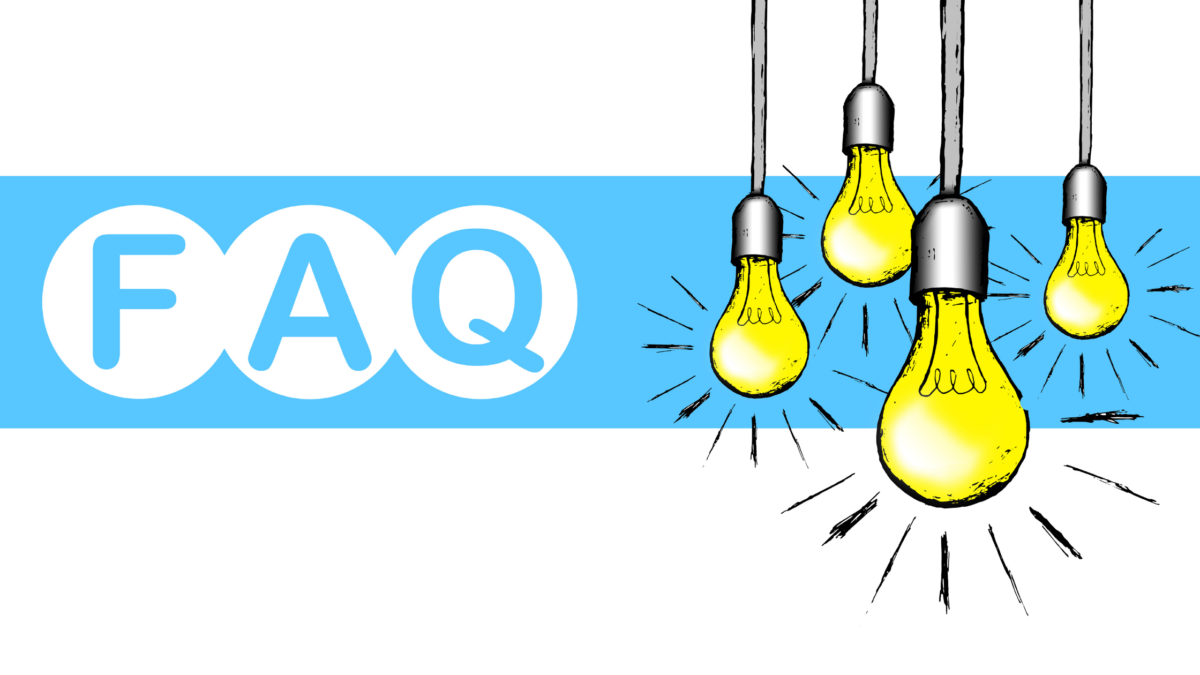
What is a B2B sales pipeline?
A B2B sales pipeline is essentially a road map of steps that take a buyer from discovery to purchase.
What is the buyer’s journey?
A buyer’s journey is the process your potential buyer goes through before buying your product. When you understand your buyer’s journey, you can create a sales funnel that fits the buyer’s needs.
What are B2B sales?
B2B sales are an essential part of any business. They are a way to continue making sales while you scale your business. In order to increase sales with B2B sales, you need to first define your sales funnel.
What do you mean by content marketing ?
Content marketing means creating, publishing and sharing great content that solves a problem for your target audience. It’s about creating valuable, shareable and engaging content that goes viral and drives traffic to your site.
What Will Buyers Look For?
B2B Marketing is a process in which companies sell their goods and services to other companies. B2B Marketing is different than B2C Marketing. B2C Marketing is a process in which companies sell their goods and services to consumers while B2B Marketing is a process in which companies sell their goods and services to other companies.
